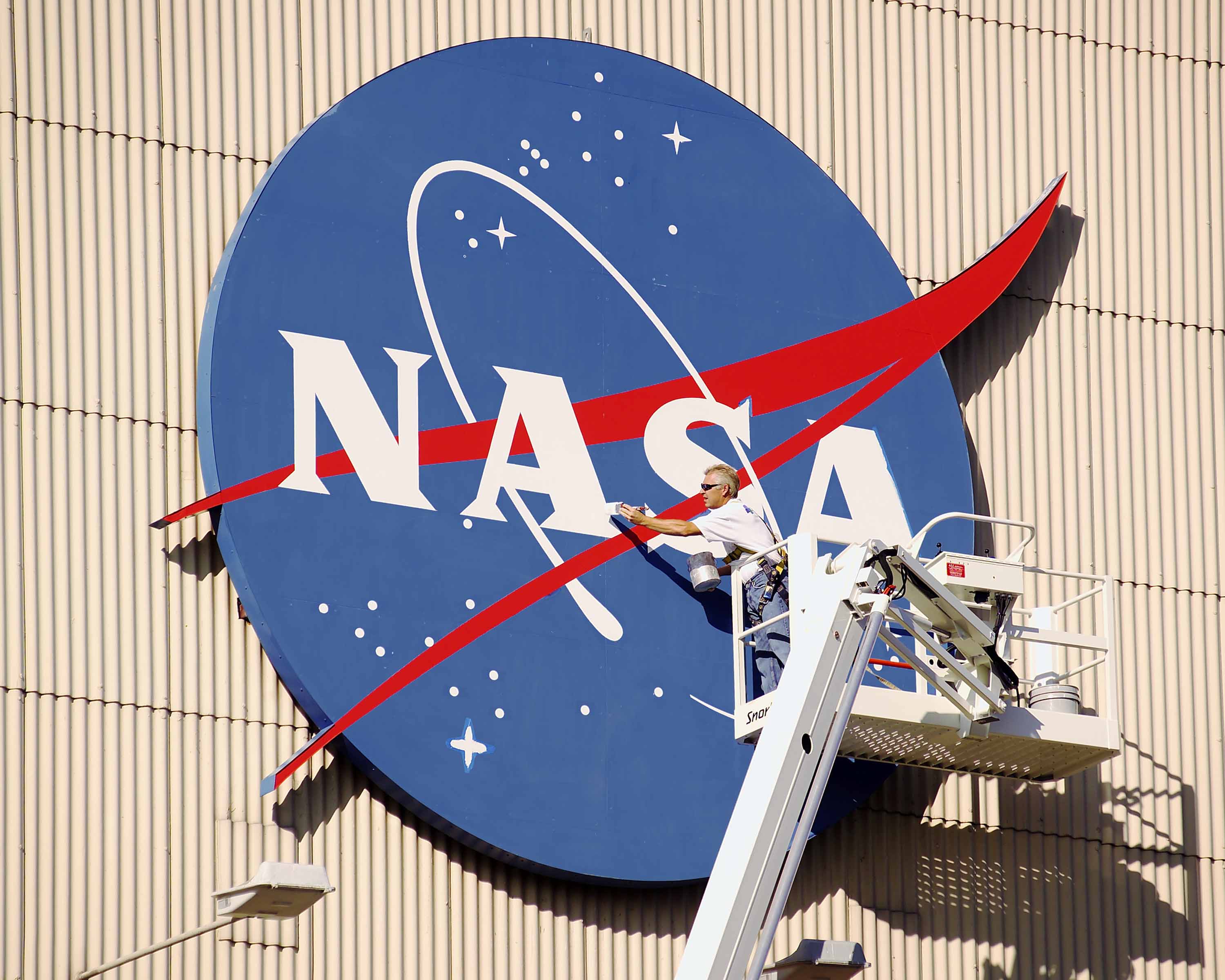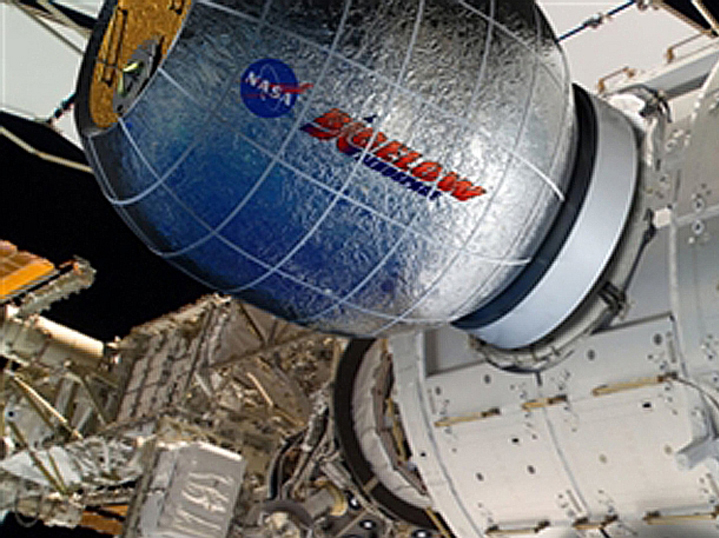This tech had been delayed pending the availability of commercial crew spacecraft (coming 2016-2017) and less expensive launchers (done deal.) Time to get cracking....
NASA & Bigelow Aerospace of Las Vegas, NV have contracted for a test of their expandable habitat technology at the International Space Station. A formal announcement will be made Jan 16, 2013 at Bigelow's HQ by NASA Deputy Administrator Lori Garver and CEO Robert T. Bigelow.
The BEAM (Bigelow Expandable Activity Module) will be launched compressed inside a SpaceX Dragon's unpressurized cargo Trunk and attached to ISS Node 3. There it will be used for storage & logistics - basically to prove the integrity of its hull and seals in a manned spaceflight environment.
Once proven this would open the way for larger, more complex habitats for use at ISS and for long duration cislunar and deep space missions by both NASA and the commercial operators
Bigelow Aerospace is teamed with both Boeing and SpaceX, and intends to launch and operate private space facilities built from modules ranging from 330 to 2,100 cubic metros, the latter being twice the volume of the ISS.
Bigelow's tech can also be used to build synthetic gravity centrifuge habitats, similar to the crew core of the Discovery in 2001.
BEAM

BA Station

NASA & Bigelow Aerospace of Las Vegas, NV have contracted for a test of their expandable habitat technology at the International Space Station. A formal announcement will be made Jan 16, 2013 at Bigelow's HQ by NASA Deputy Administrator Lori Garver and CEO Robert T. Bigelow.
The BEAM (Bigelow Expandable Activity Module) will be launched compressed inside a SpaceX Dragon's unpressurized cargo Trunk and attached to ISS Node 3. There it will be used for storage & logistics - basically to prove the integrity of its hull and seals in a manned spaceflight environment.
Once proven this would open the way for larger, more complex habitats for use at ISS and for long duration cislunar and deep space missions by both NASA and the commercial operators
Bigelow Aerospace is teamed with both Boeing and SpaceX, and intends to launch and operate private space facilities built from modules ranging from 330 to 2,100 cubic metros, the latter being twice the volume of the ISS.
Bigelow's tech can also be used to build synthetic gravity centrifuge habitats, similar to the crew core of the Discovery in 2001.
Contractor BIGELOW AEROSPACE, LLC
NORTH LAS VEGAS, NEVADA
Contract Number NNH13CH31C
NASA Center HQ - Headquarters Acquisition Division
Place of Performance North Las Vegas, NV (District 01)
Award Date 12/20/2012
Completion Date 12/19/2017
Contractor Type Small Business
Award Type Firm Fixed Price
Current FY Obligations $6,350,000
Total Obligations $6,350,000
Total Award Value $17,865,903
NAICS Code 541712
Description of Work UNDER THIS CONTRACT, THE CONTRACTOR SHALL CONTRACTOR TO PROVIDE AND OPERATE THE BIGELOW EXPANDABLE ACTIVITY MODULE (BEAM) ON-BOARD THE INTERNATIONAL SPACE STATION (ISS). THIS EFFORT IS FOR PHASE 2 OF THE BEAM ISS DEMONSTRATION MODULE PROJECT, AND ESTABLISHES THE REQUIREMENTS, PERFORMANCE METRICS, COSTS, AND MANAGEMENT OF THE EFFORT THAT WILL BE USED TO DESIGN, DELIVER, AND OPERATE THE BEAM.
NORTH LAS VEGAS, NEVADA
Contract Number NNH13CH31C
NASA Center HQ - Headquarters Acquisition Division
Place of Performance North Las Vegas, NV (District 01)
Award Date 12/20/2012
Completion Date 12/19/2017
Contractor Type Small Business
Award Type Firm Fixed Price
Current FY Obligations $6,350,000
Total Obligations $6,350,000
Total Award Value $17,865,903
NAICS Code 541712
Description of Work UNDER THIS CONTRACT, THE CONTRACTOR SHALL CONTRACTOR TO PROVIDE AND OPERATE THE BIGELOW EXPANDABLE ACTIVITY MODULE (BEAM) ON-BOARD THE INTERNATIONAL SPACE STATION (ISS). THIS EFFORT IS FOR PHASE 2 OF THE BEAM ISS DEMONSTRATION MODULE PROJECT, AND ESTABLISHES THE REQUIREMENTS, PERFORMANCE METRICS, COSTS, AND MANAGEMENT OF THE EFFORT THAT WILL BE USED TO DESIGN, DELIVER, AND OPERATE THE BEAM.

BA Station







Comment